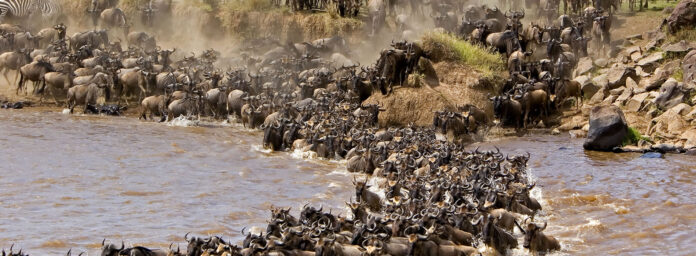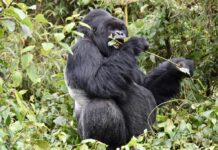Enjoy the flying safaris in Tanzania Uganda are designed for those tourists who always want to avoid long distances driving on their Tanzania Uganda Safaris. This is a great way to reduce travel time, especially for those planning a safari within limited time- frames. This will take you to Serengeti National Park in Tanzania and Bwindi national park in Uganda.
A tour in Tanzania without setting your eyes on the beautiful Serengeti National Park is not a safari worthwhile. The word Serengeti simply means endless plains in the Maasai language. The diversity and beauty of the park will leave you yearning to visit the park as soon as you can. The park is located north of Tanzania and stretches into the south of Kenya with an area of about 1.5 hectares of Savannah grassland.
Upon arrive at Kilimanjaro airstrip; you will transfer to Serengeti national park for a game drive. Serengeti National Park is a World Heritage Site teeming with wildlife: over 2 million ungulates, 4000 lions, 1000 leopard, 550 cheetahs and some 500 bird species inhabit an area close to 15,000 square kilometres in size.
Join us on this East African Safari and explore the endless Serengeti plains dotted with trees and kopjes from which majestic lions control their kingdom; gaze upon the Great Migration in awe or find an elusive leopard in a riverine forest. Or perhaps see everything from a bird’s-eye view and soar over the plains at sunrise during a hot air balloon safari.
Wildebeest migration takes place once every year and several people from all over the world come with the hope of experiencing this beautiful site. This activity is mind-blowing and mouth gaping because the sight of such large animals causing great waves and splashes in the Water as they move in search for greener pastures is worth the visit.
After all this, fly to Uganda for the gorilla show in Bwindi. From Entebbe airport, you will be driven to Kajjansi airstrip for a flight to Kihihi airstrip where you will find your driver guide to take to Bwindi in a 4×4 land cruiser. Gorilla Trekking in Bwindi National Park is arguably the most popular tourism activity in Uganda. The activity takes you for a special encounter with Mountain gorillas.
Bwindi impenetrable national Park is divided into four main sectors – Rushaga, Nkuringo, Buhoma and Ruhija. Rushaga and Buhoma have more gorilla families than other sectors. They are also more popular for gorilla tracking. Visitors who are interested in a gorilla habituation experience can do it from Rushaga.
Gorilla watching in Bwindi is done throughout the year but the dry/peak season is the best time to visit gorillas in Bwindi Impenetrable National Park. The peak season falls in the dry months of December to February and June to August. The wet season is in March to May and October to November. Tracking gorillas during the rainy season is more challenging because of the overgrown vegetation and muddy trails.
Gorilla trekking in Bwindi Forest starts with a briefing at the park headquarters at around 7:30am. Visitors should sleep early before the day of tracking and wake up by 5am to take breakfast before starting the journey to the park office. After the briefing at the park office, trekkers are separated into smaller groups of 8 people.
Each group of eight track a particular gorilla family. Some gorilla families live near the park offices while others are found further away. The Park Guides from the Uganda Wildlife Authority, two armed rangers and porters move with each group. The Guides are very experienced, knowledgeable and well-trained.
The time taken tracking gorillas in Bwindi depends on the gorilla group one is assigned to. It can take only 30 minutes to locate some groups while others can take hours. A team of trackers normally go ahead of the group to identify the location of the gorilla family.
They then inform the lead Guide by radio call of the exact location of the gorilla family. These advance trackers know where the gorilla group built their last sleeping nests and will head to that direction.

